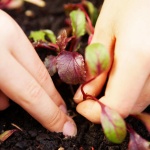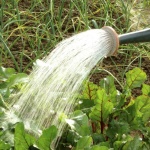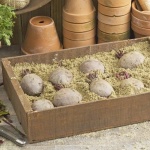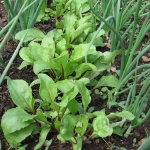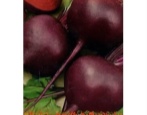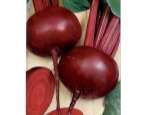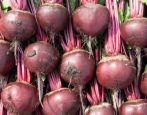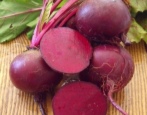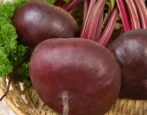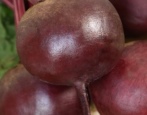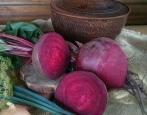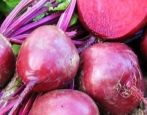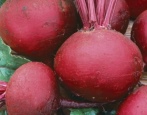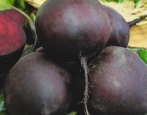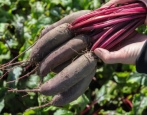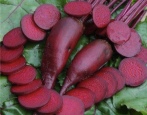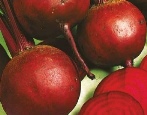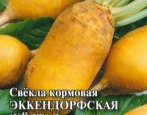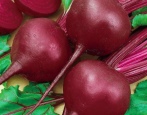
- Authors: Sakata
- Year of approval: 2007
- Leaf rosette shape: semi-upright
- Leaves: oval, green, slightly bubbly, strong waviness of the edge
- Petiole: bottom side red
- The form: rounded
- Weight, g: 203-375
- Cork head: medium size
- Pulp color : red
- Ringiness: medium rings
Kestrel beet is a table hybrid, which is famous for its high yield, excellent taste and ease of care. The versatile variety is very popular with farmers engaged in vegetable growing on an industrial scale, and among owners of summer cottages engaged in gardening. Today Kestrel beet is considered a versatile hybrid that gives a good and stable yield even when grown in unfavorable conditions.
Breeding history
The Kestrel F1 beet hybrid was bred in 2004 in France by Japanese breeders of the Sakata vegetables Europe S. A. S. Institute, which is located in Provence. The variety was officially registered in Europe in 2007. It appeared in Russia in 2008.
Description of the variety
Kestrel beetroot is a mid-season variety with a growing season of 115-120 days. Planting can be carried out with seeds from the end of April, or seedlings from the second half of May, when the soil warms up to + 7 ° С.
The variety is resistant to diseases such as:
root rot;
tobacco mosaic;
powdery mildew.
Root crops are resistant to mechanical damage, have a bright and rich burgundy color, and retain their taste during winter storage. The Kestrel variety is not afraid of sudden temperature changes and tolerates drought quite easily.
Characteristics of the appearance of the plant and root crops
The aboveground part of the culture has a compact leaf rosette with low leaves. Fruits are round in shape with a smooth surface and a small root. The weight of one root vegetable ranges from 203 to 375 g.
Purpose and taste of tubers
Kestrel beets are versatile hybrid varieties that are distinguished by a rich taste, juicy pulp and high sugar content, the percentage of which remains high even after heat treatment.
Beets of this variety can be used for cooking various dishes, winter preparations, making mashed potatoes and juices. It is suitable for both industrial processing and personal use. Due to its rich and rich taste, this variety is used for the preparation of baby food, for which the raw materials are strictly selected.
Maturation
A universal hybrid mid-season variety can be used both for early sowing in open ground to obtain young bunch beets, and for growing large root crops, which are harvested in the fall. To obtain a young bunch of beets, which can be eaten with tops along with a root crop, it takes from 55 to 60 days.
It takes an average of 120 days from the date of sowing to fully ripen the culture. The versatile variety can be planted several times during the season:
in the end of April;
in May;
in July.
Summer residents can get the first harvest of bunch beets by the beginning of summer. Having several beds on which Kestrel beets are planted, you can get young beets throughout the warm season, as well as get a large harvest of tasty root crops for winter storage.
Yield
Due to the high viability of the Kestrel hybrid to external conditions, it is possible, subject to simple agricultural techniques, to obtain by the end of the summer season up to 6 kg of tasty and large root crops from 1 m2 of the garden. Kestrel beets, even in dry conditions, always give a consistently high yield.
Growing regions
Beets of this variety are suitable for growing in Russian regions with different climates. In regions with early spring and long summer (this includes the south of Russia, the Volga region, the North Caucasus), it is usually planted with seeds starting from mid-late April. Kestrel beets can also be grown in the middle lane, in the Urals, Siberia and the Far East. In Russian regions with harsh climatic conditions, it is planted in open ground or in greenhouses not with seeds, but with seedlings.
Growing and care
In open ground, beet seeds are sown after the soil warms up to +7 degrees. Kestrel, like any beetroot, loves places that are well lit by the sun. Before sowing seeds or planting seedlings, the beds need to be well dug onto a shovel bayonet, adding potash fertilizers to the soil.
Beets of this variety grow well after crops such as:
cabbage;
potato;
cucumbers;
onion.
During the growing season, 2-3 feeding is required. Wood ash can be used as fertilizer. Although this variety is drought tolerant, it should be watered at least 5-6 times during the dry season. In this case, you should not overmoisten the soil. After watering, loosening and weeding are recommended.
Compliance with simple agricultural techniques will allow you to get a large harvest in the autumn, which will allow you to make a lot of winter harvesting and get a high-quality and useful root crop for winter storage.

Beetroot tolerates cold snaps, therefore it is widely grown in the open field. When planting beets, you need to correctly determine the sowing time, choose a suitable place, prepare the beds, and do pre-sowing seed treatment.
